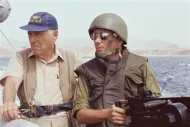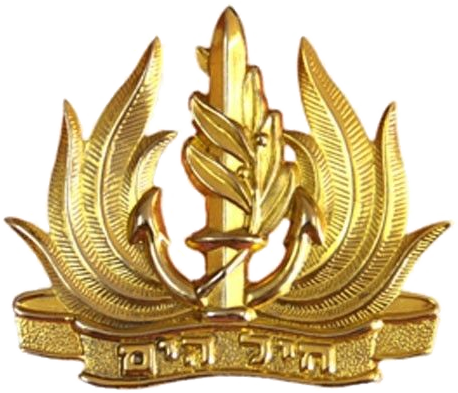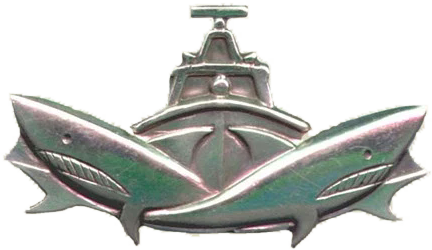Trump-Putin deal imperils Israeli, Jordan borders, DEBKAfile, August 12, 2017

Local US-backed Syrian rebel groups disbanded without a shot, went over to the Syrian government side and handed in their US-supplied weapons to Syrian army and Hizballah fighters.
Sooner or later, the Sweida model will be replicated in Quneitra. Neither the Russian troops nor UN peacekeepers will fight to stop it happening. By then, the Syrian rebel groups, in whose support Israel invested for years as a buffer against hostile Syrian, Iranian and Hizballah forces, are already falling apart. Disowned by their Saudi backers, they are being crushed by the US-Russian “de-escalation” steamroller. Israel like Jordan will soon find three hostile forces sitting pretty just across its border, far too close for safety.
******************************
The transformation of a small, strategic wedge of land between the Syrian, Israeli, Jordanian and Iraqi borders is going forward apace without arousing much interest – even in Israel, where it should cause the most concern, DEBKAfile reports.
On Wednesday, Aug. 8, two Russian army companies of Ingushet troops from the northern Caucasus set up a command post in the Syrian village of Tal al-Shahm, 13km from Israel’s Golan border. Its commander, Col. Alexei Kozin, has thus taken charge of Syria’s border with Israel. As DEBKAfile reported last month, his task is to set up 10 control checkpoints along that border.
This border area was designated as one of four de-escalation zones agreed on between Presidents Donald Trump and Vladimir Putin at their meeting in Hamburg on July 7.
According to understandings reached between Washington, Moscow and Jerusalem, the UN separation force (UNDOF) will return to its Fawar base opposite Quneitra as a buffer between IDF and Russian forces. Its past history in this role between IDF and Syrian forces was never exactly impressive.
A piece of diplomacy consistent with this process was contributed by Russian foreign Minister Sergey Lavrov on Friday, Aug. 11. It was an assurance that Russia would take into account Israel’s interests in Jerusalem in the framework of Israeli-Palestinian peace talks.
It also fits in with the surprising statement from Washington on the same day, namely, that Donald Trump, although in the midst of a fearsome crisis with North Korea with military overtones, is planning to send his senior adviser, son-in-law Jared Kushner and Israel-Palestinian peace broker Jason Greenblatt, on an early visit to the Middle East to continue this mission.
To see how these disparate elements fill out the whole picture, we turn 70km east from Quneitra on the Syria Golan to the battles ongoing at Sweida in southeastern Syria opposite the Jordanian and Iraqi borders. Russian troops moved into the key town of Daraa, abutting on the Jordanian border on July 13. Like in Quneitra, a month later, they set up command posts to monitor the first de-escalation or ceasefire zone to be set up under the Hamburg accord.
The Russian troops’ assignment was to stop the fighting there and execute the withdrawal of the combatant forces, the Syrian army, Iran, and its foreign Shiite militias, including Hizballah, to a distance of 40km from the border.
But that arrangement never stood up.
Nearly four weeks later, on Wednesday night, Aug. 9, on the same night that Russian troops moved into Quneitra, the Syrian army and Hizballah launched a major offensive in Sweida province. Three days later, by Saturday, they had forced the local rebel forces to retreat into Jordan and seized 57km of Syria’s southern frontier with the Hashemite Kingdom.
Neither the Russians nor the American interfered with the Syrian-Hizballah-led push, although the Russians took responsibility for maintaining the ceasefire, and US special forces were and still are posted to the east of Sweida at Al-Tanf in the Syrian-Jordanian-Iraqi border triangle.
(See attached map)
DEBKAfile’s military sources add that the Syrian-Hizballah offensive violated the ceasefire deal. Local US-backed Syrian rebel groups disbanded without a shot, went over to the Syrian government side and handed in their US-supplied weapons to Syrian army and Hizballah fighters.
The Sweida episode demonstrated how the Syrian-Iranian-Hizballah alliance sees its way to using the Trump-Putin ceasefire zones accord as an open door for seizing control of southern Syria and grabbing the Jordanian and Israeli borders.
The Syrian rebel movement is disintegrating at an alarming rate following the “Jubeir earthquake,” as it has become known – another momentous event which Western and Israeli front pages have chosen to ignore.
Last week, Saudi Foreign Mniser Adel al-Jubeir reportedly informed a delegation of Syrian opposition leaders invited to Riyadh that his government was pulling its support from their fighting militias, in the wake of President Trump’s decision to reduce US military action in Syria solely to the war on ISIS – and therefore end US resistance to the Assad regime.
Saudi officials did not deny the report, only termed it “inaccurate.”
But meanwhile, the decisions by Riyadh and Washington to abandon the anti-Assad cause spread like wildfire among Syrian rebel groups. Many responded by laying down their arms and surrendering.
The fate of the rebel movement after six years of cruel warfare against the dictator Bashar Assad should be an object lesson to other recipients of American and Russian promises. Therefore, Lavrov’s pledge to take Israel’s interests in Jerusalem into account should be taken with a pinch of salt. He was most likely shooting a line to allay Israeli skepticism about the prospect of Russian troops keeping Syrian, Iranian and Hizballah troops at bay from its northern border – even through this pledge was underwritten by Washington.
Instead of taking the two powers at their word, Israel need only watch what is going on in the last few hours just across the border at Sweida, to appreciate the value of such promises.
Sooner or later, the Sweida model will be replicated in Quneitra. Neither the Russian troops nor UN peacekeepers will fight to stop it happening. By then, the Syrian rebel groups, in whose support Israel invested for years as a buffer against hostile Syrian, Iranian and Hizballah forces, are already falling apart. Disowned by their Saudi backers, they are being crushed by the US-Russian “de-escalation” steamroller. Israel like Jordan will soon find three hostile forces sitting pretty just across its border, far too close for safety.












Recent Comments